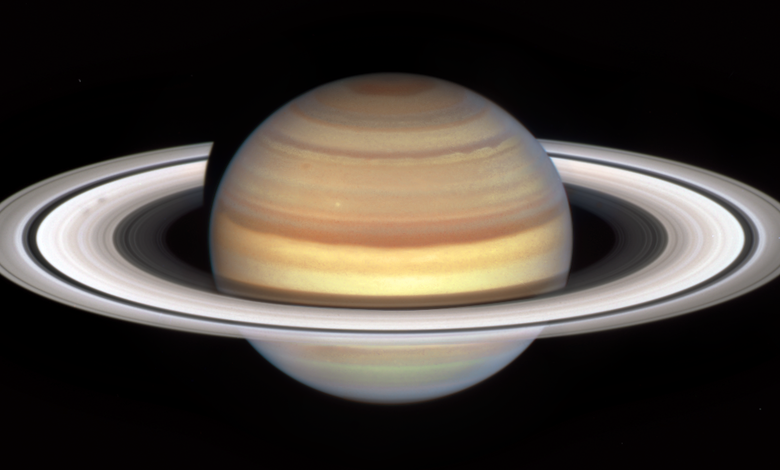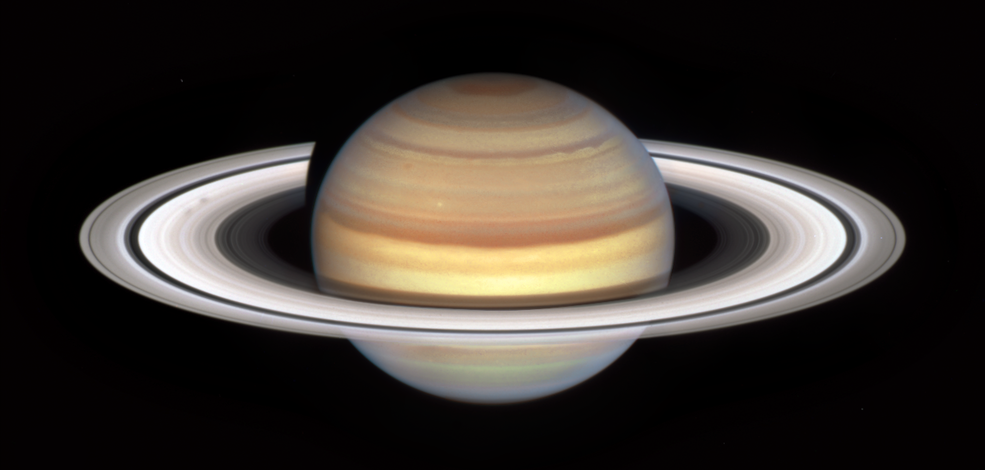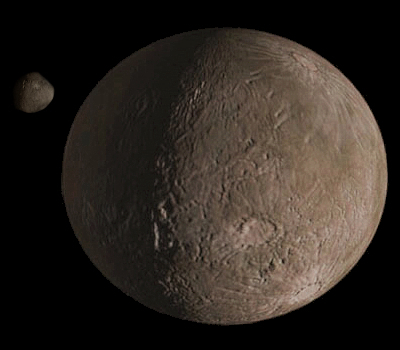Rings Aren’t Rosy – Saturn’s are Smudged and a Dwarf Planet’s are Too Far Away

It has probably happened since Dutch spectacle maker Hans Lipperhey patented the first refracting telescope and Galileo Galilei built his own and made them popular – kids get a telescope and the first thing they want to see are the rings around Saturn. For eons, those rings were thought to be unique to Saturn, but later astronomers discovered them circling the other three giant planets – Jupiter, Uranus, and Neptune. Saturn’s are still the most spectacular, and the other planets seem to keep the rings in the realm of giant planets. Two recent discoveries have taken the sheen and specialness off of planetary rings – Saturn’s are starting to show some smudges, and a ring system has been found around a dwarf planet. Not only does this blow the ‘only giants have rings’ theory out of the water, this dwarf’s rings are so far away from it that they should be beyond its gravity. The rings around our solar system aren’t rosy these days – let’s see if we can figure out why.
“This latest image heralds the start of Saturn’s “spoke season” with the appearance of two smudgy spokes in the B ring, on the left in the image. The shape and shading of spokes varies – they can appear light or dark, depending on the viewing angle, and sometimes appear more like blobs than classic radial spoke shapes, as seen here.”

Before kids started begging their parents for a new telescope because the lens on theirs is smudged, NASA wisely issued a statement explaining that it is “spoke season” on Saturn. Like Earth, Saturn has a tilt and that gives it four seasons. However, because its orbit is so much longer than Earth’s, a season on Saturn lasts seven Earth years. Saturn is currently nearing the end of its summer season, but that doesn’t mean its rings are working on their tans. What it does mean is that the rings are developing smudges or spokes – a phenomenon only discovered about 40 years ago by the Voyager probes. These are not signs of sunburn, but their cause has eluded astronomers. That may change in the current spoke season as the venerable Hubble space telescope has captured some excellent detailed photos of the smudged rings.
“Thanks to Hubble’s OPAL program, which is building an archive of data on the outer solar system planets, we will have longer dedicated time to study Saturn’s spokes this season than ever before.”
NASA senior planetary scientist Amy Simon, head of the Hubble Outer Planet Atmospheres Legacy (OPAL) program, explains in a press release how the spokes/smudges appear near the last four years of the Saturn summer and will become more pronounced as the autumn equinox arrives in its northern hemisphere on May 6, 2025. As expected, they begin to fade during the winter, then return in the spring to begin the cycle again. Simon thinks this intense crutiny by Hubble will solve the mystery of the smudges. The betting money is on Saturn’s variable magnetic field and how it interacts with the solar wind. On Earth, this causes charged particles in the atmosphere, resulting in the aurora borealis (northern lights) in the norther hemisphere. It is suspected that the massive magnetic field of Saturn causes charged particles all the way into the inner rings. The charge may then lift the smallest particles out of the ring, causing them to cast a shadow on the larger ones, resulting in the smudge or spokes we see.
Or maybe not. Smith says data from the Cassini mission which spent years orbiting Saturn was unable to solve the spoke mystery, or even help predict when they appear. You can be sure NASA will keep us posted as more is known – a kind of ‘Smudge Report’.
Far beyond Saturn to the outer edge of the solar system is the Kuiper Belt – that vast collection of orbiting space rocks known as Trans-Neptunian Objects (TNOs). Some are large enough to fall into the category of dwarf planets, and one of those is Quaoar. Discovered on June 4th, 2002 by California Institute of Technology astronomers Chad Trujillo and Michael Brown (Brown is famous as a Planet 9 hunter and for knocking Pluto down to dwarf planet status) using the Samuel Oschin Telescope at Palomar Observatory, Quaoar (also called 50000 Quaoar) didn’t seem to have anything that would make it unusual – it was smaller than other dwarfs like Eris, Haumea, and Makemake. That changed recently when astronomers discovered a very unusual ring around Quaoar. It didn’t have any smudges, but its location made its existence a puzzle.
“Up to now, all known dense rings were located close enough to their parent bodies, being inside the Roche limit, where tidal forces prevent material with reasonable densities from aggregating into a satellite. Here we report observations of an inhomogeneous ring around the trans-Neptunian body Quaoar. This trans-Neptunian object has an estimated radius of 555 km and possesses a roughly 80-km satellite (Weywot) that orbits at 24 Quaoar radii. The detected ring orbits at 7.4 radii from the central body, which is well outside Quaoar’s classical Roche limit, thus indicating that this limit does not always determine where ring material can survive.”
A team of astronomers led by Bruno Morgado, a professor at the Federal University of Rio de Janeiro in Brazil and lead author of the paper published recently in the journal Nature, found a ring around Quaoar, which is only about 700 miles in diameter and about 4 billion miles from the Sun. Amazingly, that hasn’t prevented other astronomers from finding Quaoar and its even tinier moon. Now, Morgado and his international team discovered a faint ring by noticing that a star blinked out when Quaoar passed in front of it. The ring is nowhere near Saturnian – it is uneven, measuring from a few miles wide in some spots to hundreds of miles wide in other spots, to almost nonexistent in others. Even more interesting, by standard ring distances, it shouldn’t exist at all – it is outside the so-called Roche limit for the dwarf planet.

The Roche limit is named for French astronomer Édouard Roche who determined a formula for measuring the limit of a planet’s gravity for holding a ring in place – outside the Roche limit, the ring particles would be scattered into space. Quaoar’s Roche limit is 1,100 miles (1770 km), while its ring is an unbelievable 2,500 miles (4023 km) away. This either means that Quaoar’s gravity is really strong, or Roche’s limit is really wrong.
“If the data weren’t so convincing, I would insist they weren’t real.”
Even Michael Brown is baffled. He and other astronomers tell The New York Times that they now expect to find more dwarf planets with rings. And even though these ringed dwarfs are out in the Kuiper Belt, they will help explain how planets formed by accreting or accumulating particles. And, as Quaoar shows, those young planets may have had quite a pull.
Perhaps that headline is misleading – the discovery around Quaoar shows that some rings ARE rosy in our solar system.




